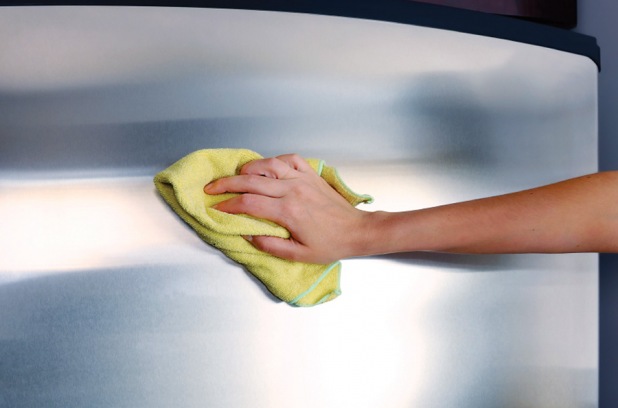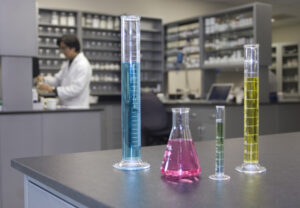
Steel, an alloy of iron and carbon, is constructed to withstand the maximum stress that a material can undergo without stretching or breaking. It is for this reason that the laboratory industry entrusts in the strength and dexterity of this element. It holds the infrastructure of buildings, automobiles, ships, appliances. But surely that’s not the only reason we like gravitate towards steel in commercial and industrial workspaces, it also falls back to what aesthetically pleases the eye. Steel is clean, contemporary, and devoid of trends. It has been around long before our grandparents age and will outlive the human race. You’ve just bared witness to our ode to steel but now for the realists inquiry, how on earth are you suppose to clean it? It’s challenging to scratch or damage, yes, but steel does expose fingerprint smudges and water marks with great ease. If you have a steel refrigerator you know it’s nearly impossible to keep your loved one’s handprints off the handles and the same goes for fume hoods. Their sole purpose is to be a vessel for experimentation. With experimentation comes test tubes that runneth over and eventually layers of unknown gunk, aka genius, that even the most OCD of folks have given up on tending to. We are here to offer you the cleaning guide to both stainless and powder coated steel:
Direction of the Grain
Before we break into what to use to clean you must master the art of how to clean. Cleaning in the direction of the grain is especially important for stainless. If you look closely at your fume hood, or lab cabinetry, you can visually see a horizontal or vertical direction in which the grain moves. Do not rub in a circulation direction, although you gravitate towards this wax-on-wax-off motion, you must flow in the direction of the grain for optimal results.
Vinegar Myth
Many will recommend vinegar as an all-natural cleaning solvent for pretty much anything in your home but when it comes to degreasing your kitchen range hood, or removing bacteria or mold from your fume hood, there are many other household cleaners better equipped for the job. A recent study in the Journal of Environmental Health confirms that, “Vinegar was more effective in reducing microbial containment than alternative cleaners but least effective in removing soil”. If you strive to remove biological microorganisms from your lab then vinegar can be used but if your goal is to remove liquids or other matter then reach for an alternative solution. Since dirt is often the most common containment you will be cleansing your laboratory or home of see our alternative below.
Cleaning Alternative / Types of Containment
What should you use as an alternative? Regular dish soap and water! Grab a bucket and mix soap with a few drops of liquid detergent in warm water. You can use a lint-free rag to wash the surface (of powder coated steel) making sure that you clean beneath the grooves and alongside the not so visible surfaces. Disclaimer: be mindful of sharp corners, often they are squared, sharp, and with adequate pressure applied they can wound. Follow up by rinsing with cold water. Powder coated finishes resists rust caused by oxidation so you can actually allow the water to dry on the surface without harming the paint (similar to baked on powder coated finishes of a car). If that doesn’t do the trick then try using a pH-neutral household cleaner. Avoid solvents, these are liquids or gasses that can dissolve or extract substance like grease, oil, or paint and they can obstruct the finish of your powder coated furniture.
We recommend using a bristle brush, sponge, or clean cloth. Avoid paper towels and cotton rags as they will stick to the coating. Also avoid using a carbon steel brush or steel wood because they may leave particles along the surface which can lead to unfavorable rusting. Once you have cleaned the surface with soap or a household cleaner, be sure to conclude your cleansing by applying an additional layer of water to rinse away any leftover soap or cleaning product. As for stainless, you can spot treat greasy fingertip smudges by using a glass cleaner or rubbing sodium carbonate with water (with a soft rag). Again, rinse with water afterwards. Avoid using chloride-contained detergents.
Since all steel furniture have varying finishes, we are happy to speak with you further and lend advice about the best cleaning regimen. We hope you reach out to us via Twitter @geniescientific or you may feel free to call us at (714) 545-1838.




